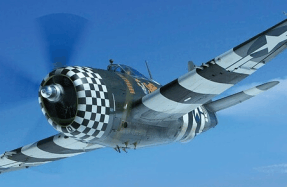

Saburo Sakai was a samurai, tracing his warrior-caste linage back to sword-swinging feudal forebears who had invaded Korea in the 16th century. Raised on a small farm near the city of Saga, Japan, he learned to scorn money and to endure resultant poverty rather than stooping to accepting servitude in exchange for currency. His family still proudly wore the twin sabers-emblazoned emblem of the abolished samurai order, and stoically, pridefully endured the harshness of their lot.
His iron constitution helped him stand out in the Navy Fliers’ School. His abilities were many and marked. Instructors were impressed as they watched him swim 50 meters in well under 30 seconds, hold his breath underwater for two and a half minutes, hang by one hand from the top of a pole for more than half an hour, and effortlessly snatch flies out of the air. In 1937, he graduated at the head of the 38th Non-Commissioned Officers Class. Seventy-five meticulously selected applicants had started the course, and Sakai finished first among the 25 still there at the end.

Serving in China during the Sino-Japanese War, he immediately gained note for his daring aerial exploits, downing Chinese and Dutch aircraft with monotonous regularity. Once, after being caught on the ground and wounded in a surprise air raid, he staggered to his Zero, pursued the attacking formation, and crippled a bomber before returning to base half dead from loss of blood. Based in Formosa at the time of the attack on Pearl Harbor, he participated in the initial strikes on American forces in the Philippines and was responsible for the first B-17 Flying Fortress ever lost in combat, downing the bomber on December 11, 1941.
On April 8, Sakai and his squadron were transferred to a






